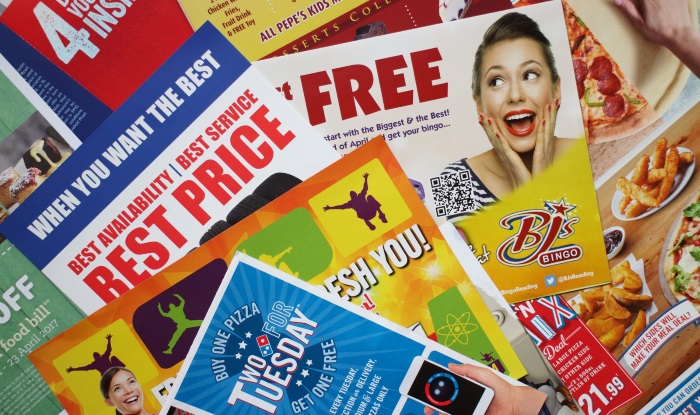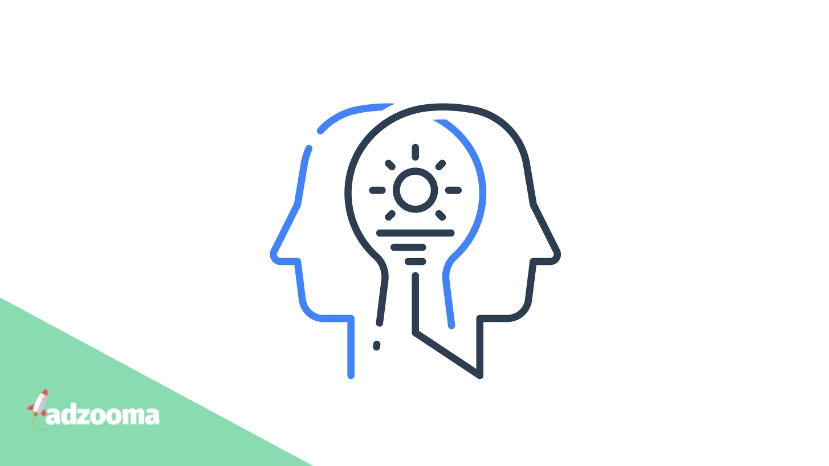These are the juiciest bits of what we discussed – we cover a lot of the landscape which makes it a nice summary of psychology month on the blog.
The relationship between psychology and marketing
As humans, we’re ruled by our emotions, thoughts and desires. Just as psychology investigates these motivations, marketing tries to sway them. That’s why understanding the human mind is a fundamental part of nailing any advertising brief.
An evolutionary perspective sheds light on the reasons we react in certain ways. Our reaction to certain colours may stem from instinct: the colours blue, black and purple cut our appetite perhaps due to previous warning signs of them being poisonous.
There’s really a lot to be said for sensory marketing. Big brands capitalise on colour association: fast food chains know that the colour red suggests speed; grocery stores are known for pumping ‘fresh bread smell’ into the shop to encourage people to buy more (it works.)
A study also showed that making your home smell like citrus increased the value buyers were prepared to offer. The association with cleanliness that the smell evokes causes people to think of the property as better. Similarly, hotels such as Ritz Carlton purposely make their lobbies smell a certain way to evoke a homely familiarity through smell.
The magazine itself
The Psychology and Marketing Journal was established in 1984 and published by John Wiley & Sons. The editor-in-chief is Ronald Jay Cohen. It is a peer-reviewed journal which attracts scholars and authority figures to write on topics which they’re passionate about. It was started to offer an academic perspective on how psychology was becoming increasingly incorporated into advertising.
Whilst most articles surround psychology and marketing directly, there are special issues which discuss topics such as artificial intelligence. The journal’s earlier work was simpler, related to traditional advertising and based on data sourced from face-to-face surveys in shopping centres. Today, most studies centre around digital marketing and information sourced online. It is the job of the editors, such as Anil, to look for peers to review submissions and enhance studies.
The most powerful reason people buy
If you want to make someone buy your product, what should your focus be? The price? The design? The website? The customer journey?
Well, of course, it really depends on the product. If you’re a high-end Swiss watch company, the selling point is going to be the features. Make the most of its appearance with high-quality images to show it off. The price is something that can fall to the bottom of the page once you’ve got someone’s emotional buy-in.
If you’re selling something cheaper, small things such as the colour of the ‘add to basket’ button can have a big impact. It’s well known that the cheaper the product, the less time it takes for someone to decide if they’re going to buy it or not. If the button is green, people take that as another subconscious nod to go ahead with the purchase. However, when the button is made red, the colour alone causes the person to reconsider, even for a fraction of a second.
“If you are buying a phone online and the price is $100 with free shipping or $90 + $10 shipping, the first always gets chosen as people don’t like the idea of paying extra, even though there’s no difference.”
Anil Biligihan
Breaking the cycle
“I’m teaching a class to marketing professionals and they’re all fascinated by learning how to utilise marketing tactics within their own companies. But, they admit that after class, they just go back to what they know. They find it hard to break out of what they’re comfortable with.”
Anil Biligihan
Interestingly, people don’t remember the prices of things. They split things into ‘high price’ and ‘low price’ when there’s a comparison, but don’t recall the exact figure. This means if you market yourself as a cheaper alternative, even if you slowly increase your prices afterwards, people won’t realise; their habits will keep them coming back for more.
People also aren’t very rational. They’ll drive to a bookstore 20 minutes further away to save $20 on a book, but won’t factor in the extra time and petrol it’s cost them instead.
Building a long-lasting relationship with your audience
In the same way that we make friends with people who are like us, we like to buy from brands we share similarities with. Brands with the same values as us appeal more because they help to affirm the image we have of ourselves (more on this with confirmation bias.)
Offer value for free, and make them a fan of what you’re doing before they’re a customer. Brands that do it well are the ones that are honest.
Increasing perceived value
You have to provide value. That’s imperative. The equation for value is:
The perceived value of the product – the cost of the product = value
A lot of marketers think that in order to increase product value, you must decrease the price. However, you don’t have to do this. You can keep the price the same and instead increase the perceived value of the product. Furthermore, the benefits don’t have to be utilitarian, rather they can be hedonic or social. People now, in particular millennials, are a lot more socially conscious and responsible. They are more likely to buy from companies that are environmentally aware, for example, because they perceive them as better brands – they care more than just about themselves.
People instinctively want to belong to a group. So brands that create this sense of belonging naturally succeed. Apple does this really well. Their products make you feel part of something bigger. Their UX is not only intuitive, but it makes people’s lives easier. This sense of belonging also trickles down to microlevels such as iMessage. When messaging someone with another iPhone, your messages are blue. If not, the text messages are green. Simple things like this create a sense of inclusivity. You may prefer to use an android phone, but small things like this which make you feel excluded from a social circle are sometimes enough to make you conform.
If you create a product that not only works but makes people’s lives easier in other ways, then you create something which is harder to replace: ease. Apple makes their products sync together beautifully; they work together so well that it’s easier to continue buying Apple products. The value that they create by understanding people and their lives is what makes their technology popular.

Playing with emotions
For anything over a few quid, emotion is selling the product first and foremost. With expensive products such as a Swiss watch, the advert always centres around the emotional side. If it’s over £50,000, that’s a huge consideration. But, if the advert is saying “it’s not just your watch, but a watch to hand down over generations”, suddenly you’re not thinking of the enormous price tag, but rather your great-great-grandchild. A family heirloom. Framed with emotion, spending the money is an investment. Worthwhile. After all, the cost is being split across generations.
Furthermore, if you make a price easier to pronounce (use fewer syllables) then more people will buy. This works even if the figure is written down and being bought online, so never actually spoken aloud. So we shouldn’t assume decisions are made primarily due to the price tag – often this is barely a factor at all.
“Information comes in bitesize chunks as that’s all we have the attention span for. Rather than reading product descriptions, people read other’s opinions. If you see someone you aspire to be using a product on social media, often that is all that’s needed to encourage you to make the purchase.”
Anil Biligihan
The impact of technology on psychology
Technology has changed everything: the way we shop, date, travel, everything. Not only do we live in a world filled with convenience, we’ve become more impatient. Where before getting something delivered to your home was helpful, we’re only interested today if it can arrive the next morning. 2-hour shipping is already a thing. The world is getting increasingly demanding and attention spans are almost nonexistent. Technology provides instant gratification and means that if we get bored we can simply move on.
The impact of this on imagination is noticeable. With everything so visual, gone is the need to be able to create something in your mind’s eye. We’re always connected and have access to entertainment 24/7. So naturally, our tolerance for monotony is lower.
“A lot of people don’t read the articles that they share. A study proved that you could fill a piece with gibberish but post it with a catchy headline, and people would still share it. This is because people don’t have the patience to read long copy, so never actually click on it, but want to be seen to be engaging with the right things.”
Anil Biligihan
The Internet has changed how many people we can compare ourselves to. Our once small social circles can now span continents, and things such as wealth and opportunity mean nothing when you’re comparing yourself to a model on Instagram. Technology has fueled the sense of dissatisfaction that can manifest within ourselves, as well as given ground to mental issues such as anxiety, depression and FOMO. More and more people are taking digital detoxes: to step back from screens and the online world now seems to make us feel more human. It’s as though we have to take time to be our true selves rather than the online versions which we continuously promote.
At least 50% of our communication is none verbal: facial expression, body language, tone of voice. These all play a part the meaning of what someone says – something which is stripped back when in a digital universe.
Keeping psychology in mind
In a digital-first world, it’s more important than ever to take the time to discuss things in person, and focus on the psychological impact of marketing, as well as simply harnessing it for our own benefits.
Thank you to Anil for his time and expertise on all these topics. Be sure to read the Psychology and Marketing Journal to see how to keep psychological thinking involved in your marketing strategy.




